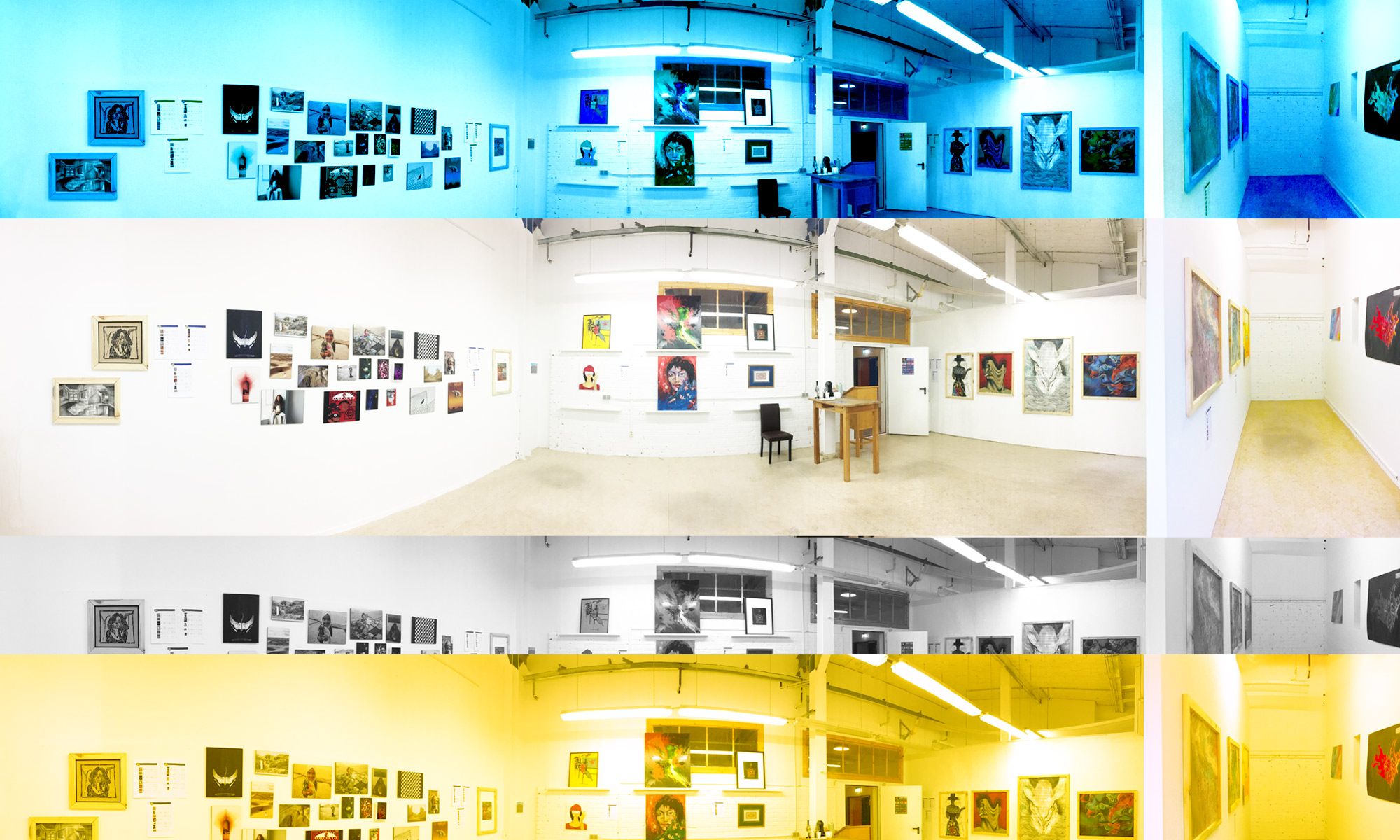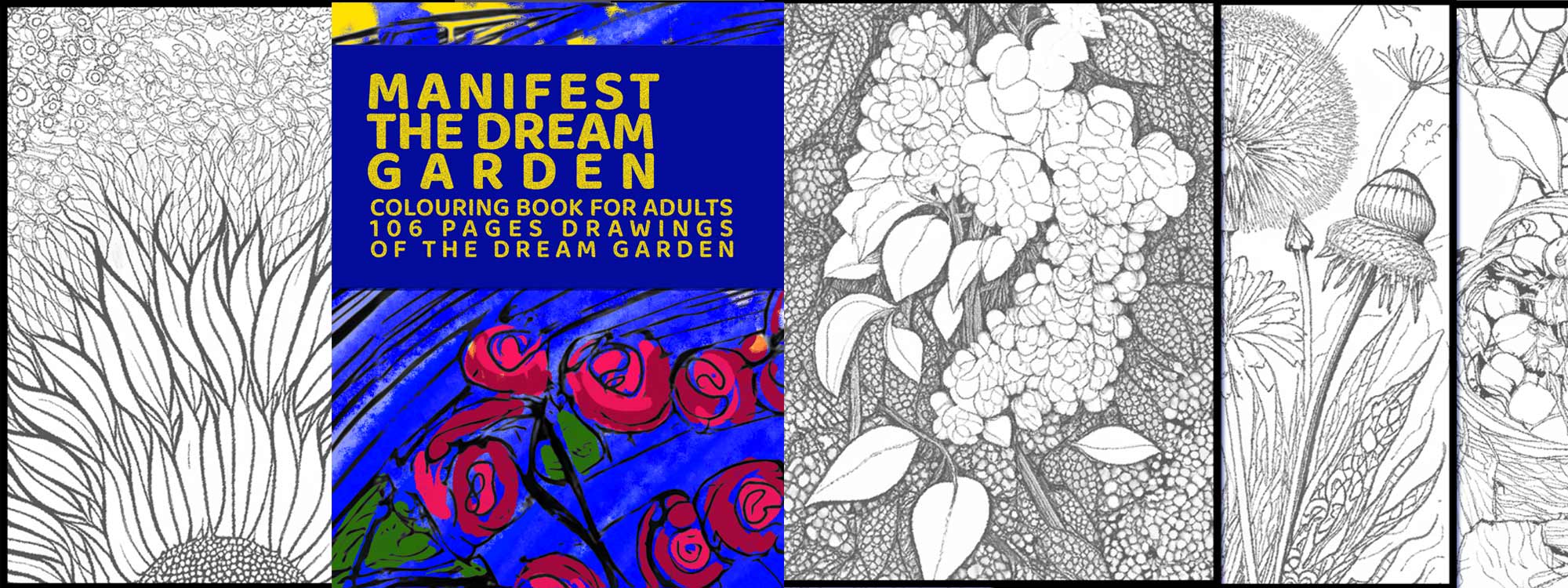In today’s fast-paced world, finding moments of tranquility and mindfulness can be challenging. Many people are turning to creative activities as a way to unwind and reconnect with themselves. One such activity that has gained popularity is coloring books. These seemingly simple books offer more than just a nostalgic return to childhood; they have become a powerful tool for meditation and stress relief.
Coloring Books and Meditation: A Path to Inner Peace
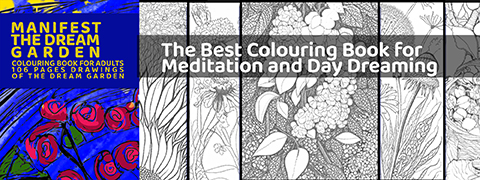
In today’s fast-paced world, finding moments of tranquility and mindfulness can be challenging. Many people are turning to creative activities as a way to unwind and reconnect with themselves. One such activity that has gained popularity is coloring books. These seemingly simple books offer more than just a nostalgic return to childhood; they have become a powerful tool for meditation and stress relief.
The Therapeutic Power of Coloring
Coloring books for adults are designed with intricate patterns and detailed images that require focus and concentration. Engaging in this activity can have a meditative effect, similar to that of traditional meditation practices. Here’s how coloring books can enhance your well-being:
1. Stress Reduction: Focusing on coloring can help divert your mind from daily stresses. It provides a break from negative thoughts and anxiety, allowing you to immerse yourself in a creative and calming task.
2. Mindfulness: The repetitive action of coloring promotes mindfulness. It encourages you to stay present in the moment, paying attention to the colors, shapes, and patterns you are creating.
3. Enhanced Concentration: As you choose colors and stay within the lines, you develop a stronger focus. This can improve your ability to concentrate on tasks outside of coloring as well.
4. Creativity Boost: Coloring stimulates the creative areas of your brain, fostering a sense of accomplishment and boosting self-esteem.
Try It for Free: Download 12 Sample Pages
Integrating Coloring into Your Meditation Practice
To maximize the benefits of coloring, you can integrate it into your meditation routine. Here are a few tips to get started:
– Set the Mood: Create a peaceful environment with soft lighting and calming music. This sets the tone for a relaxing coloring session.
– Choose Your Tools: Select high-quality coloring materials that feel good to use. The tactile experience can enhance the meditative quality of the activity.
– Focus on Your Breathing: As you color, pay attention to your breathing. Deep, steady breaths can help you stay calm and focused.
– Stay Present: Try to keep your thoughts on the task at hand. If your mind wanders, gently bring it back to the colors and patterns.
Introducing “Manifest the Dream Garden”
One coloring book that stands out in promoting meditation and mindfulness is “Manifest the Dream Garden”. This beautifully designed book combines intricate illustrations with inspirational quotes, creating a perfect blend of creativity and contemplation.
“Manifest the Dream Garden” invites you to explore a magical world of floral patterns, whimsical creatures, and serene landscapes. Each page is a journey into a peaceful sanctuary where you can manifest your dreams and aspirations through the meditative process of coloring.
Why “Manifest the Dream Garden” is Unique:
– Inspirational Quotes: Each illustration is paired with a motivational quote that encourages positive thinking and self-reflection.
– Themed Illustrations: The book features a variety of themes that cater to different moods and preferences, ensuring that there is something for everyone.
– Quality Design: Printed on high-quality paper, the pages are designed to withstand different coloring tools, from pencils to markers, without bleeding through.
By incorporating “Manifest the Dream Garden” into your meditation practice, you can unlock a new dimension of mindfulness and creativity. This book not only helps you relax and unwind but also serves as a tool for personal growth and self-expression.
Try It for Free: Download 12 Sample Pages
To give you a taste of what “Manifest the Dream Garden” has to offer, we are excited to provide a free download of six sample pages. These pages will give you a glimpse into the intricate designs and inspirational quotes that make this book special. Whether you’re new to coloring or a seasoned enthusiast, these samples are a great way to experience the therapeutic benefits firsthand.
Download Your Free Sample Pages
Conclusion Coloring books are more than just a pastime; they are a gateway to mindfulness and inner peace. By dedicating time to this meditative practice, you can reduce stress, enhance concentration, and boost your creativity. “Manifest the Dream Garden” is a wonderful resource to aid in this journey, offering beautifully designed pages that inspire and calm the mind. Embrace the therapeutic power of coloring, download your free sample pages, and discover the tranquility that lies within.
Drawing techniques with pencils
Drawing with pencils is one of the most accessible and popular forms of art. It is a versatile medium that allows artists to create a wide range of textures, tones, and effects. Whether you are a beginner or a professional artist, there are many drawing techniques that you can use to improve your skills and create stunning works of art.
In this article, we will explore some of the most popular techniques for drawing with pencils, including the use of different pencils, shading techniques, and more.
- Choosing the Right Pencil
The first step to creating a great pencil drawing is choosing the right pencils. There are many different types of pencils available, each with its own hardness or softness, and this can make a big difference in the look of your drawing.
Here are the most common types of pencils used for drawing:
- H pencils: These pencils are hard and are used for creating light lines and details. They range from H9 (the hardest) to H1 (the softest).
- B pencils: These pencils are soft and are used for creating dark lines and shading. They range from B9 (the softest) to B1 (the hardest).
- HB pencils: These pencils are in the middle of the hardness scale and are a good all-around pencil for drawing.
When choosing your pencils, it is a good idea to have a range of hardnesses available so you can create a variety of tones and textures in your drawing.
- Shading Techniques
Shading is one of the most important techniques in pencil drawing. It can add depth, dimension, and texture to your work, and it can help create a realistic and three-dimensional effect.
Here are some shading techniques to try:
- Hatching: This technique involves creating parallel lines that are close together to create a smooth, even shade.
- Cross-hatching: This technique involves creating overlapping lines that create a darker shade.
- Stippling: This technique involves creating small dots to create a textured effect.
- Smudging: This technique involves using your finger or a blending tool to smooth out the pencil marks and create a softer, more blended effect.
- Texture Techniques
Creating texture is another important technique in pencil drawing. Texture can add interest and detail to your work and can make it look more realistic.
Here are some texture techniques to try:
- Scratching: This technique involves using a sharp object (like a knife or a razor blade) to scratch the surface of the paper and create a textured effect.
- Cross-contour lines: This technique involves creating lines that follow the contours of the object you are drawing to create a textured effect.
- Stippling: As mentioned above, stippling can also be used to create texture.
- Other Techniques
There are many other techniques you can use to create different effects in your pencil drawings. Here are a few more to try:
- Blending: This technique involves using a blending tool (like a blending stump or a tissue) to smooth out the pencil marks and create a more uniform shade.
- Erasing: Erasing can be used to create highlights and to remove mistakes.
- Layering: Layering involves building up layers of pencil marks to create a more complex and textured effect.
- Resources for Learning More
There are many resources available to help you learn more about drawing with pencils. Here are a few to check out:
- Drawing tutorials on YouTube: There are many great drawing tutorials available on YouTube, covering a wide range of techniques and styles.
- Drawing books: There are many great books available on drawing with pencils, including “Drawing for the Absolute Beginner” by Mark Willenbrink and Mary Willenbrink and “The Complete Guide to Drawing” by Giovanni Civardi.
- Online courses: There are also many online courses available that can help you improve
Water Color Tips
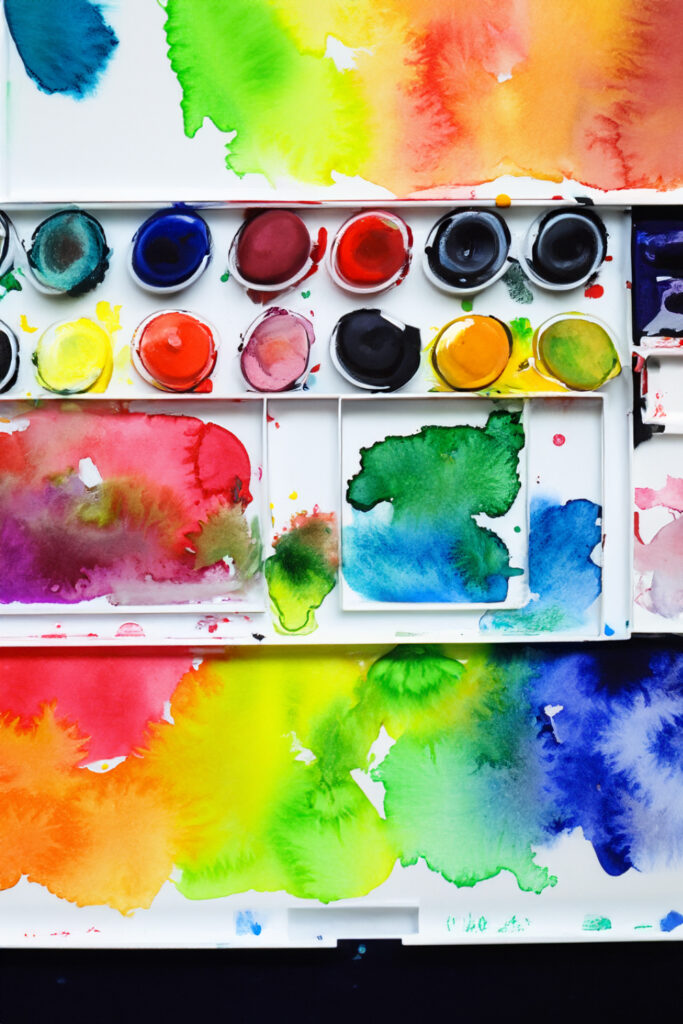
Watercolor is a wonderful medium that can create dreamy, fantastical landscapes, but it can be a challenge to master. To get the most out of your watercolor paintings, it’s important to use high-quality materials. I recommend upgrading from a beginner-level paint like Pelikan to a professional-grade one like Schmincke. Schmincke paints have a higher pigment concentration, which means they produce brighter, more vibrant colors that blend well together.
In addition to using high-quality paint, selecting the right paper is also crucial. Watercolor paper is specially designed to absorb water and hold the paint in place, allowing you to create beautiful washes and fine details. I recommend using paper with a weight of at least 140 lb (300 gsm) and a rough or cold-pressed texture, like Arches Watercolor Paper.
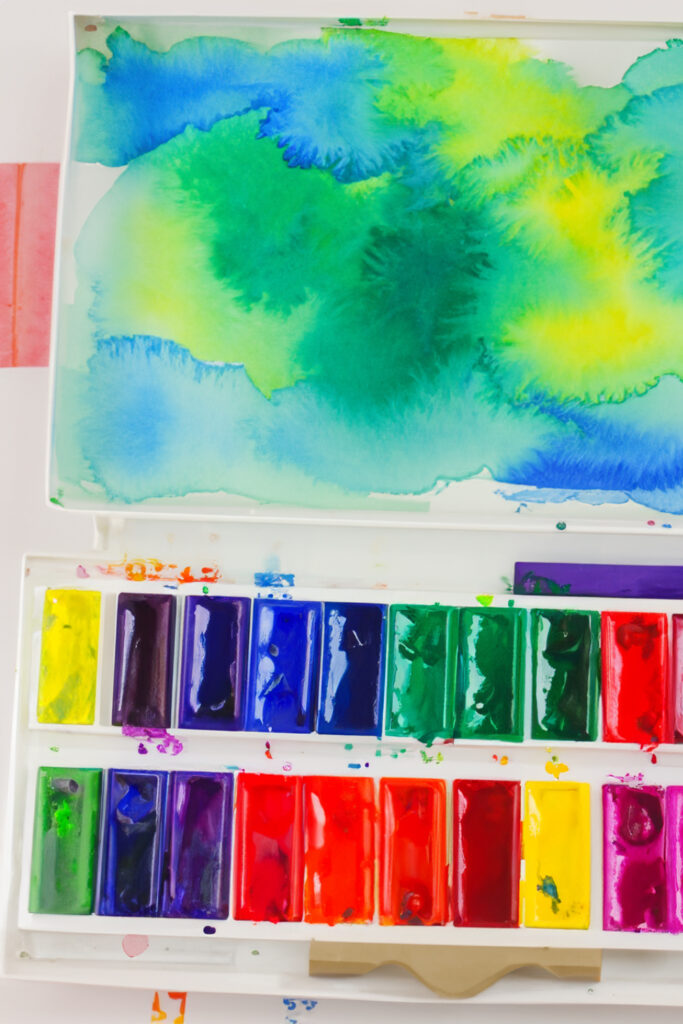
To get the most out of your watercolor paints, there are a few techniques you can use. One is to use a wet-on-wet technique, where you wet the paper with clean water before adding paint. This creates a beautiful, soft look that’s perfect for creating dreamy, atmospheric scenes. Another technique is to use a dry-brush technique, where you use a dry brush to apply paint to a dry surface. This produces a more textured look, which can be great for creating interesting details and contrast.
If you’re new to working with watery materials, trying out ink on cheaper paper or cardboards can be a great way to experiment with a whole new world of painting. You can also experiment with different types of watercolor brushes, like round brushes for detailed work and flat brushes for larger washes.
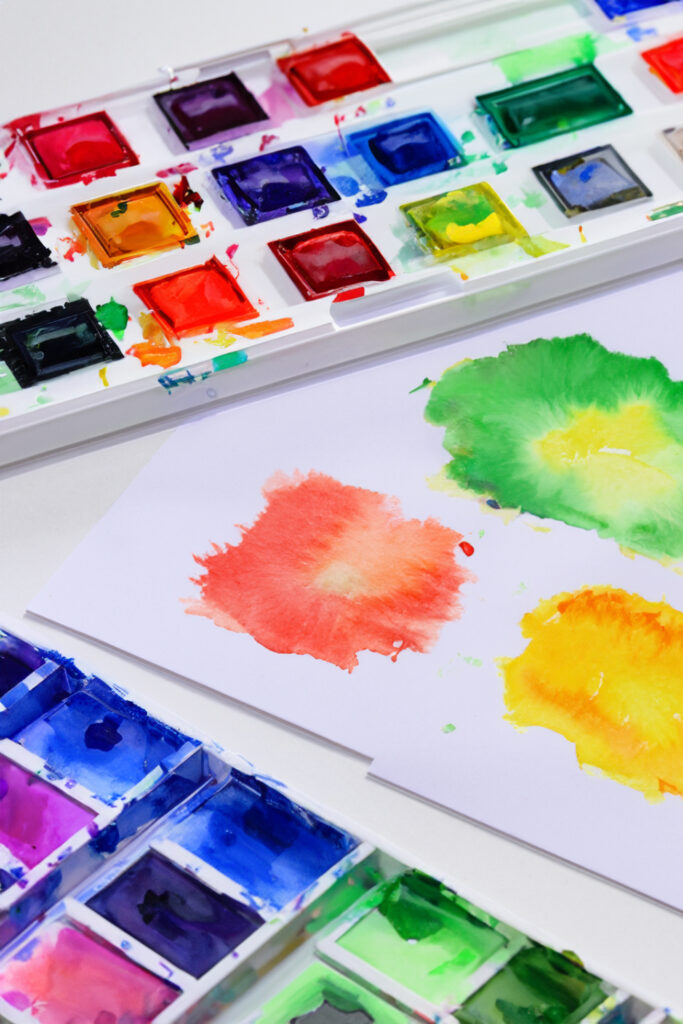
Here are the links to the brands mentioned:
- Schmincke watercolor paints: https://www.schmincke.de/en/products/watercolours/
- Arches Watercolor Paper: https://www.arches-papers.com/watercolor-paper/
- Pelikan watercolor paints: https://www.pelikan.com/pulse/Pulsar/en_US_INTL.CMS.displayCMS.154425./watercolour-paints
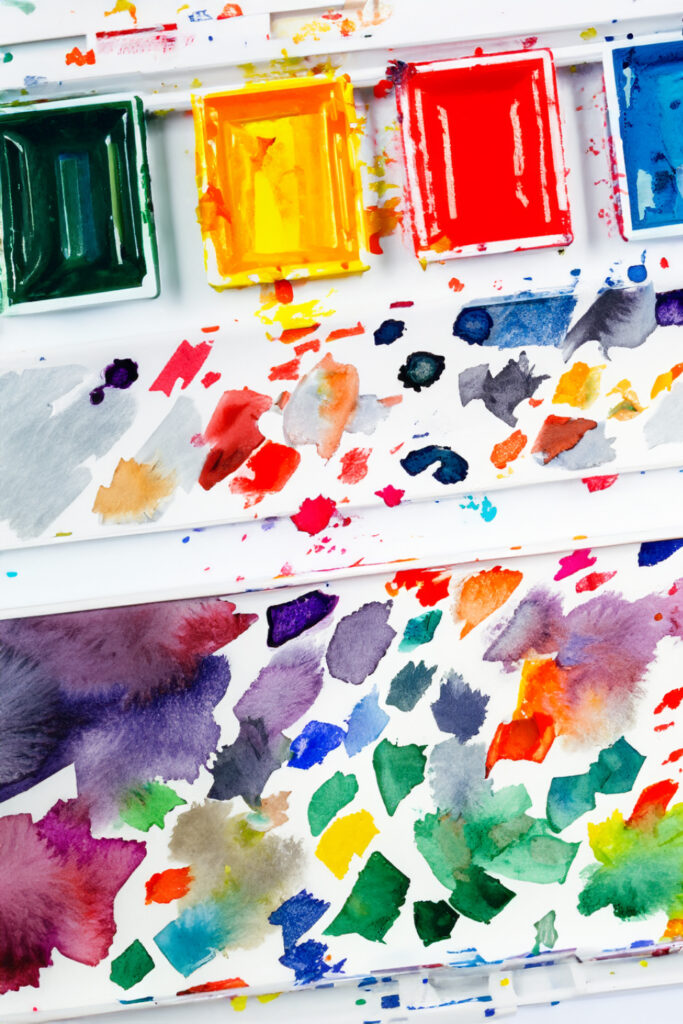
Club Culture in Berlin
Berlin is known for its vibrant nightlife scene, and the city is home to some of the most famous clubs in the world. Here are a few clubs that you might want to check out, along with their website links:
- Berghain/Panorama Bar (https://berghain.berlin/)
Berghain is perhaps the most famous club in Berlin, known for its techno music and strict door policy. The club is housed in a former power plant and has a raw, industrial atmosphere. Panorama Bar is located on the top floor and offers a more relaxed atmosphere with a view of the city skyline.
- Watergate (https://www.water-gate.de/)
Watergate is located on the banks of the Spree River and is known for its house and techno music. The club has two dance floors and a rooftop terrace with a panoramic view of the city.
- Tresor (https://tresorberlin.com/)
Tresor is another famous techno club in Berlin, located in a former bank vault. The club has a gritty, underground feel and is known for its intense sound system.
- Sisyphos (https://sisyphos-berlin.net/)
Sisyphos is a sprawling club complex located in an abandoned factory. The club has multiple dance floors, outdoor areas, and even a swimming pool. It’s known for its eclectic music and laid-back, hippie atmosphere.
- KitKatClub (https://www.kitkatclub.org/)
KitKatClub is a fetish and techno club that’s known for its wild parties and anything-goes atmosphere. The club has multiple dance floors, a pool, and various play areas for guests who are so inclined.
- ://about blank (https://aboutblank.rocks/)
Located in a former factory in Friedrichshain, ://about blank is known for its house and techno music, as well as its outdoor courtyard and garden area.
- Club der Visionaere (https://clubdervisionaere.com/)
Club der Visionaere is a small, laid-back club located on the banks of the canal in Kreuzberg. The club is known for its minimal techno music and intimate atmosphere.
- Golden Gate (https://www.goldengate-berlin.de/)
Golden Gate is a small, dark club located in Mitte. It’s known for its eclectic music, including techno, house, and experimental beats.
- Salon zur Wilden Renate (https://renate.cc/)
Salon zur Wilden Renate is a whimsical club located in an old apartment building in Friedrichshain. The club is known for its playful, colorful decor and diverse music lineup.
- Kater Blau (https://www.katerblau.de/)
Kater Blau is located on the banks of the Spree River and is known for its house and techno music, as well as its outdoor garden area and riverside beach.
- Griessmuehle (https://www.griessmuehle.de/)
Griessmuehle is located in an old industrial complex in Neukölln and is known for its techno music and underground vibe.
- Wilde Renate (https://www.renate.cc/)
Wilde Renate is a multi-room club located in an old apartment building in Friedrichshain. It’s known for its quirky, colorful decor and eclectic music lineup.
These clubs represent just a small sample of the many exciting nightlife options available in Berlin. From underground techno parties to stylish cocktail bars, this city truly has something for everyone.
Art Supplies in Berlin
Oil paints are a popular medium for artists due to their vibrant colors, rich textures, and versatility. They are made by mixing pigments with linseed oil or another drying oil, and are slow-drying, allowing artists to blend and manipulate the paint for longer periods of time.
If you are looking to purchase oil paints in Berlin, there are several art supply stores that carry a wide variety of brands and colors. One option is boesner (https://www.boesner.com/), which has multiple locations throughout the city and offers a large selection of oil paints from popular brands like Winsor & Newton, Old Holland, and Schmincke.
Another option is the art supply store Gerstaecker (https://www.gerstaecker.de/), which also has multiple locations in Berlin and carries a range of oil paints from brands like Lukas, Rembrandt, and Sennelier.
Cym (https://www.cym.de/) is another art supply store in Berlin that offers a range of oil paints from brands like Blockx, Mussini, and Talens. They also offer a variety of other art supplies, such as canvases, brushes, and papers.
For those who prefer to shop online, there are several art supply stores that offer delivery to Berlin. One such store is Jackson’s Art Supplies (https://www.jacksonsart.com/), which is based in the UK but ships worldwide and carries a wide variety of oil paints from brands like Gamblin, Michael Harding, and Williamsburg.
Another option is Kremer Pigmente (https://shop.kremerpigments.com/en/), which is based in Germany and offers a large selection of high-quality oil paints made with natural pigments. They also offer a range of other art supplies, such as brushes, mediums, and varnishes.
Overall, there are many options for purchasing oil paints in Berlin, both in-store and online. Whether you are a beginner or an experienced artist, these stores offer a range of colors and brands to suit your needs.
Berlin Lakes
Berlin, the capital city of Germany, is well known for its vibrant culture, history, and arts scene. However, it’s also home to some stunning lakes, which offer a peaceful retreat from the hustle and bustle of the city. Here’s a list of some of the best lakes in Berlin:
- Wannsee – Located in the southwestern part of Berlin, Wannsee is one of the largest and most popular lakes in the city. It’s a great spot for swimming, boating, and picnicking. You can also visit the nearby Strandbad Wannsee, a historic outdoor swimming pool that has been around since the early 20th century.
- Schlachtensee – This picturesque lake is located in the southwestern part of Berlin and is known for its crystal-clear water and sandy beaches. It’s a popular spot for swimming and sunbathing in the summer months.
- Müggelsee – Müggelsee is the largest lake in Berlin and is located in the southeastern part of the city. It’s a great spot for boating, fishing, and hiking. You can also visit the nearby Müggelturm, a tower that offers stunning views of the lake and the surrounding forest.
- Plötzensee – Located in the northern part of Berlin, Plötzensee is a small but charming lake that’s popular with locals. It’s a great spot for swimming and sunbathing in the summer months.
- Tegeler See – Tegeler See is a large lake located in the northern part of Berlin. It’s a popular spot for water sports such as sailing and windsurfing. You can also take a boat tour of the lake and explore the surrounding forests and parks.
These are just a few of the many lakes that Berlin has to offer. Whether you’re looking for a peaceful retreat or an active day out, there’s a lake in Berlin that’s perfect for you.
To learn more about these lakes and plan your visit, you can check out the following links:
- Wannsee: https://www.visitberlin.de/en/wannsee-lake-and-strandbad-wannsee
- Schlachtensee: https://www.berlin.de/en/attractions-and-sights/3560529-3104052-schlachtensee.en.html
- Müggelsee: https://www.visitberlin.de/en/mueggelsee-lake-and-mueggelturm-tower
- Plötzensee: https://www.visitberlin.de/en/ploetzensee-lake
- Tegeler See: https://www.visitberlin.de/en/tegeler-see-lake-and-park-ternler-wiese
Berlin Few Galleries
Berlin is a city that is renowned for its vibrant and diverse art scene. From the world-renowned museums and galleries on Museum Island to the cutting-edge contemporary art exhibitions in neighborhoods like Kreuzberg and Mitte, there is something for every art lover in Berlin. Here are just a few of the many galleries worth visiting:
- KW Institute for Contemporary Art – Located in the heart of Berlin’s Mitte neighborhood, KW Institute for Contemporary Art is one of the city’s most prestigious art institutions. The gallery hosts a rotating program of exhibitions and events, showcasing some of the most innovative and thought-provoking contemporary art from around the world. Website: https://www.kw-berlin.de/en/
- C/O Berlin – Also located in Mitte, C/O Berlin is a popular photography gallery that features a wide range of exhibitions and events throughout the year. The gallery is known for its diverse program, which includes everything from documentary photography to experimental video installations. Website: https://www.co-berlin.org/en
- Urban Spree – This Kreuzberg-based gallery is a must-visit for anyone interested in street art and urban culture. The gallery hosts a range of exhibitions and events throughout the year, showcasing the work of some of the city’s most exciting emerging artists. Website: https://www.urbanspree.com/
- Sammlung Boros – Housed in a former Nazi bunker in Mitte, Sammlung Boros is a private art collection that is open to the public by appointment only. The collection features a diverse range of contemporary art from around the world, including works by Damien Hirst, Olafur Eliasson, and Ai Weiwei. Website: https://www.sammlung-boros.de/en/home
- Berlinische Galerie – This museum in the Kreuzberg neighborhood is dedicated to modern art, photography, and architecture from Berlin and the surrounding region. The gallery’s collection includes works from the early 20th century to the present day, and it regularly hosts temporary exhibitions and events. Website: https://www.berlinischegalerie.de/en/
- Galerie Eigen + Art – With locations in both Mitte and Charlottenburg, Galerie Eigen + Art is one of the city’s most well-known contemporary art galleries. The gallery represents a diverse range of established and emerging artists, and its program includes everything from painting and sculpture to video and installation art. Website: https://www.eigen-art.com/
- König Galerie – This gallery has locations in both Kreuzberg and Mitte, and it showcases the work of some of the most exciting contemporary artists from around the world. The gallery’s program includes everything from painting and sculpture to video and performance art, and it regularly hosts exhibitions and events that push the boundaries of contemporary art. Website: https://koeniggalerie.com/
- Blain|Southern – Located in the Charlottenburg neighborhood, Blain|Southern is a contemporary art gallery that represents a diverse range of established and emerging artists from around the world. The gallery’s program includes everything from painting and sculpture to video and installation art, and it hosts a range of exhibitions and events throughout the year. Website: https://www.blainsouthern.com/
These are just a few of the many galleries that make Berlin such a dynamic and exciting city for art lovers. Whether you’re interested in contemporary art, street art, photography, or more traditional art forms, there is something for everyone in Berlin. To learn more about the city’s art scene and upcoming events, visit the official website of Berlin Art Week (https://www.berlinartweek.com/)
Berlin Kietz
Berlin is one of the most vibrant cities in Europe and is home to a diverse range of neighborhoods, each with its own unique character and charm. From the historic center of Mitte to the bohemian vibe of Kreuzberg and the trendy Prenzlauer Berg, there is something for everyone in Berlin.
Mitte: Mitte is the central neighborhood of Berlin and the historical heart of the city. It is the location of many of Berlin’s famous landmarks, including the Brandenburg Gate, the Reichstag, and Museum Island. In addition to its historical significance, Mitte is also known for its upscale shopping, dining, and trendy nightlife. It is a popular tourist destination and a hub of activity in the city.
Kreuzberg: Kreuzberg is a multicultural neighborhood known for its bohemian vibe and alternative scene. It is home to many artists, musicians, and young people, and is known for its street art, independent shops, and lively nightlife. The neighborhood has a diverse population and is a great place to experience the cultural richness of Berlin.
Prenzlauer Berg: Prenzlauer Berg is a trendy neighborhood popular with young families and artists. It is known for its charming cobblestone streets, trendy boutiques, and bustling cafes. Prenzlauer Berg is also home to Mauerpark, a popular park that hosts a famous flea market on weekends. The neighborhood is a great place to experience the creative side of Berlin.
Neukölln: Neukölln is a diverse neighborhood with a large immigrant population. It is known for its vibrant street life, multicultural food scene, and affordable rents. Neukölln is also home to the popular Tempelhofer Feld park, a former airport turned public park. The neighborhood is a great place to experience the diversity of Berlin and is popular with young people looking for a more affordable place to live.
Charlottenburg: Charlottenburg is an upscale neighborhood known for its elegant architecture, high-end shopping, and fine dining. It is home to many historical landmarks, including Charlottenburg Palace and the Berlin Zoo. The neighborhood is a great place to experience the luxury side of Berlin.
Friedrichshain: Friedrichshain is a lively neighborhood known for its hipster scene and vibrant nightlife. It is home to many bars, clubs, and music venues and is a popular destination for young people. Friedrichshain is also home to the East Side Gallery, a famous stretch of the Berlin Wall covered in murals and street art.
Schöneberg: Schöneberg is a residential neighborhood known for its peaceful streets and green spaces. It is a popular destination for families and retirees and is known for its many parks and gardens. Schöneberg is also home to the famous Nollendorfplatz, a square known for its LGBTQ+ community and vibrant nightlife.
Wedding: Wedding is a diverse neighborhood located in the north of Berlin. It is known for its affordable rents and multicultural population. The neighborhood is home to many immigrant communities and is a great place to experience the cultural richness of Berlin. Wedding is also home to the famous Plötzensee Prison, a former Nazi prison that now serves as a memorial to those who suffered there.
Spandau: Spandau is a peaceful neighborhood located in the west of Berlin. It is known for its historical landmarks, including the Spandau Citadel, and its charming old town. Spandau is a popular destination for families and retirees and is a great place to escape the hustle and bustle of the city.
Treptow-Köpenick (continued): In addition to its outdoor attractions, Treptow-Köpenick is also home to the famous Köpenick Palace, a baroque-style palace that now serves as a museum. The neighborhood is a great place to escape the city and enjoy some natural beauty.
Lichtenberg: Lichtenberg is a diverse neighborhood located in the east of Berlin. It is known for its many cultural institutions, including the Stasi Museum and the Berlin-Hohenschönhausen Memorial. Lichtenberg is also home to many parks and green spaces and is a great place to experience the cultural richness of Berlin.
Marzahn-Hellersdorf: Marzahn-Hellersdorf is a large neighborhood located in the east of Berlin. It is known for its many high-rise apartment buildings and its affordable rents. The neighborhood is home to many green spaces, including the famous Gardens of the World, a large park that showcases the world’s many different gardening styles.
Reinickendorf: Reinickendorf is a quiet residential neighborhood located in the northwest of Berlin. It is known for its many parks and green spaces, as well as its historical landmarks, including the Tegel Castle. Reinickendorf is a popular destination for families and retirees looking for a peaceful place to live.
Steglitz-Zehlendorf: Steglitz-Zehlendorf is a wealthy neighborhood located in the southwest of Berlin. It is known for its many upscale shops and restaurants, as well as its historical landmarks, including the Berlin Botanical Garden and the Dahlem Museum. The neighborhood is a great place to experience the luxury side of Berlin.
Tempelhof-Schöneberg: Tempelhof-Schöneberg is a diverse neighborhood located in the south of Berlin. It is known for its many cultural institutions, including the Schöneberg Town Hall and the Tempelhof Airport, which now serves as a public park. The neighborhood is also home to many green spaces, including the popular Viktoriapark.
Pankow: Pankow is a large neighborhood located in the north of Berlin. It is known for its residential areas, including many apartment buildings and single-family homes. The neighborhood is also home to several parks and green spaces, including the popular Bürgerpark Pankow. Pankow is a great place to live if you’re looking for a quieter, more suburban feel while still being within easy reach of the city center.
Pankow is also home to several notable attractions, including the stunning Schönhausen Palace, which served as a summer residence for the East German government. The palace and its gardens are now open to the public as a museum.
The neighborhood also has a rich history as the site of several key events in German and European history. Pankow was the site of the Pankow Conference in 1949, which led to the formation of the German Democratic Republic. The neighborhood was also the site of the Pankow protests in 1989, which helped to bring about the fall of the Berlin Wall.
Overall, Pankow is a peaceful and historic neighborhood that offers a mix of suburban and urban living. It’s a great place to live if you’re looking for a quieter pace of life while still being within easy reach of Berlin’s many attractions.
Overall, Berlin’s many neighborhoods offer a diverse range of experiences and lifestyles. Whether you’re looking for a trendy and bohemian vibe, a peaceful residential neighborhood, or a luxurious shopping and dining experience, there’s a neighborhood in Berlin that’s right for you.
Lets know some pastel brands
Pastels are a versatile medium that allow artists to create beautiful, soft, and textured artworks. There are many brands of pastels available, each with their own unique qualities and characteristics. In this article, we’ll take a look at some of the most popular brands of pastels and what sets them apart.
Rembrandt Pastels
Rembrandt Pastels are one of the most popular and widely used brands of pastels in the world. They are made in Holland and are known for their exceptional quality and rich, vibrant colors. Rembrandt Pastels are made with a high concentration of pure pigment, which means that they produce deep, intense hues that are perfect for creating bold, expressive artwork. They are also very soft and velvety, making them easy to blend and layer.
Faber-Castell Pitt Pastels
Faber-Castell Pitt Pastels are another popular brand of pastels. These pastels are made in Germany and are known for their high level of lightfastness, meaning that they resist fading over time. They are also very versatile and can be used on a variety of surfaces, including paper, canvas, and wood. Faber-Castell Pitt Pastels are known for their soft, smooth texture, which makes them easy to blend and layer. They come in a range of vibrant colors, and their square shape makes them easy to handle and control.
Sennelier Soft Pastels
Sennelier Soft Pastels are a French brand of pastels that have been used by artists for over a century. They are known for their rich, creamy texture and high pigment concentration, which produces brilliant colors that are perfect for creating luminous, expressive artwork. Sennelier Soft Pastels are very soft and crumbly, which makes them easy to blend and layer. They also come in a range of over 500 colors, including many unique and unusual shades.
Schmincke Soft Pastels
Schmincke Soft Pastels are a German brand of pastels that are known for their exceptional quality and lightfastness. They are made with pure pigments and a minimum amount of binder, which means that they produce rich, vibrant colors that are true to life. Schmincke Soft Pastels are also very soft and velvety, making them easy to blend and layer. They come in a range of over 400 colors, including many earth tones and subtle shades.
Holbein Artists’ Soft Pastels
Holbein Artists’ Soft Pastels are a Japanese brand of pastels that are known for their exceptional quality and lightfastness. They are made with pure pigments and a minimum amount of binder, which means that they produce rich, intense colors that are true to life. Holbein Artists’ Soft Pastels are also very soft and velvety, making them easy to blend and layer. They come in a range of over 200 colors, including many unique and unusual shades.
In conclusion, there are many different brands of pastels available, each with their own unique qualities and characteristics. Whether you’re looking for rich, vibrant colors or soft, velvety textures, there is a brand of pastels out there that will meet your needs. So go ahead, experiment with different brands and find the ones that work best for you!
